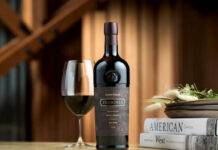Quality must be central to hot beverages range to compete with the high street

PUBS are versatile businesses, with many operators now opening their doors earlier in the day to tap into an increasingly lucrative morning trade.
And if it’s put together in the right way, a range of teas and coffees is one of the tools outlets can use to attract daytime customers, providing a valuable revenue stream that can potentially increase dwell time and boost profits.
The margins on tea and coffee are very high, so offering quality products will ensure good returns.
That was the message from suppliers, who told SLTN that operators have an opportunity to capitalise on the growing demand for tea and coffee.
But they warned that operators mustn’t skimp on quality – as customers are more discerning than ever.
“Following in the footsteps of influential high street chains and the artisan cafe culture, operators need to take on board the demand for excellent quality products,” said Barry Kither of Italian coffee brand Lavazza UK.
“The UK coffee market is evolving faster than ever before; even the younger consumer knows what they want and has a higher expectation of premium quality coffee serves from their local coffee shop or pub.”
Paula Jones, managing director of Alba Beverages, which distributes Lavazza in Scotland, added: “The margins on coffee and tea are very high, so if you offer quality products and build up customer loyalty, you will have good returns on [your] investment.”
The importance of quality was reinforced by David Watts, Buffalo brand manager for catering equipment firm, Nisbets, who said as coffee’s popularity has grown, “so has the expectation of quality from today’s discerning customer”.
While demand for espresso-style coffee “has increased significantly in recent years”, Watts takes the view that filter coffee remains “an area that should not be ignored”.
And licensees would do well to keep an eye on developing trends in the market, according to Becci Eplett of food and drink packaging firm Huhtamaki UK.
“Britain’s love of coffee continues to develop,” she said.
“Where once a flat white was revolutionary, it is now quite mainstream as taste buds demand stronger tasting coffee.
“The coffee connoisseurs will be asking for a ‘Guillermo’ (a shot of espresso over lime) or a ‘Dirty Chai’ (just add caffeine).
“[And] nitro coffee has been ‘brewing’ for a while and this could be the year it becomes popular.”
Similarly, Joe Bedford of coffee firm London Calling said that due to ‘hipster baristas’, there is “an array of different coffees and flavours available”, adding that coffee “is not a one dimensional drink” and lends itself to seasonal serves, like cold brew coffee poured over ice in the summer.
It’s also essential that coffee machines are properly maintained to avoid any drop in quality, said firms.
Kither of Lavazza UK explained that plant fats and oils, natural acids contained in coffee beans, ground coffee deposits, salts and minerals can all build up over time and contribute to “serious limescale build up”; therefore, Lavazza advises that licensees de-scale coffee machines every three months to avoid technical faults developing.
As well as avoiding inconvenient and expensive breakdowns, the right maintenance routine can extend a machine’s usable life, according to Bedford of London Calling.
He said that while many may ‘write off’ equipment after three to five years, a well-maintained machine “could easily carry on producing good coffees for up to eight years”.
As the popularity has grown, so has the expectation of quality from the consumer.
But while coffee remains a cornerstone of any decent hot beverage range, customers looking for an alternative must also be catered for, according to Allan Pirret of Novus Tea.
He reckons its health and nutritional credentials make tea “the perfect drink for a less caffeine-fuelled day”.
Sales are strong too; citing Mintel, Pirret said premium tea sales are set to double over the next ten years.
He added that premium leaf teas “create a premium tea experience, [drive] repeat business and [transform] volumes”.



















